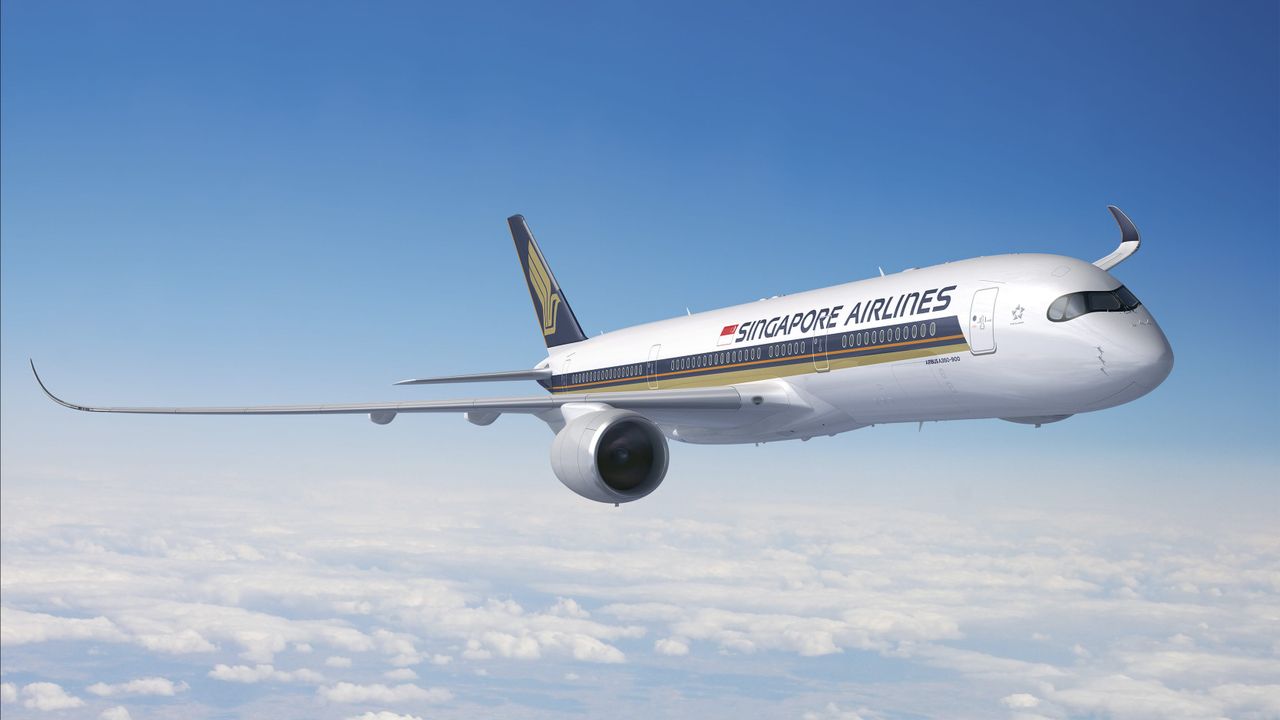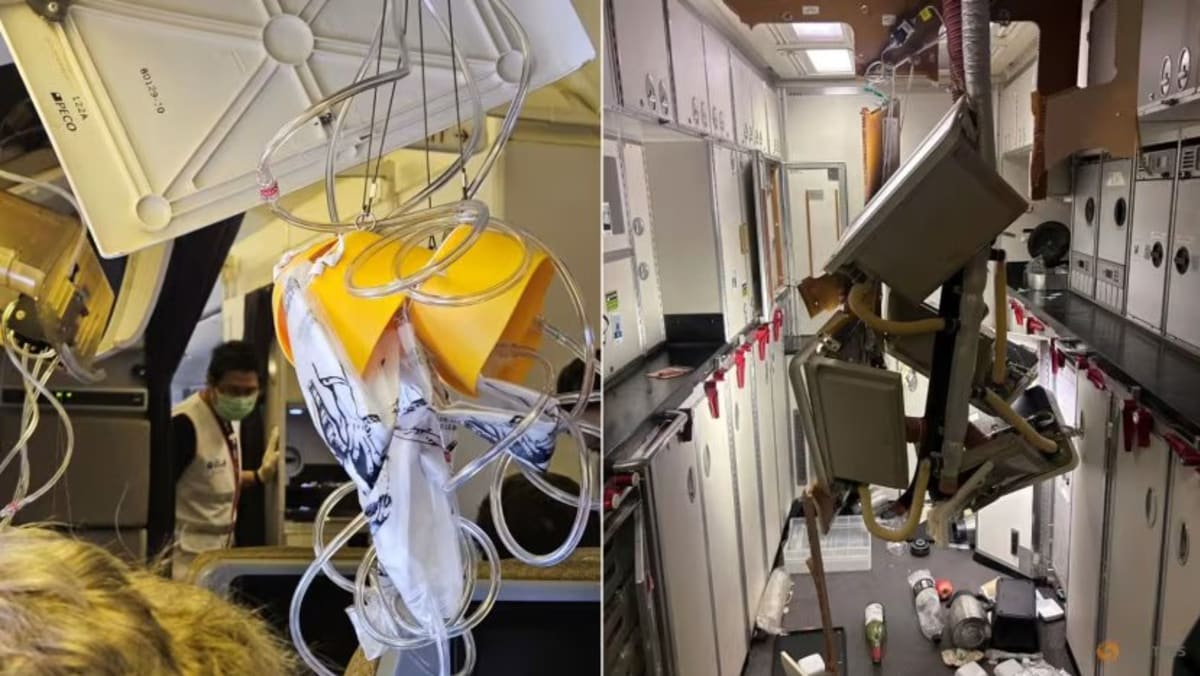Turbulence Incidents

Singapore Airlines, renowned for its exceptional safety record, takes turbulence seriously. The airline adheres to stringent safety protocols and equips its aircraft with advanced technology to minimize the impact of turbulence on passengers. While turbulence is a natural occurrence during air travel, Singapore Airlines continuously monitors weather conditions and adjusts flight paths to avoid areas with significant turbulence whenever possible.
Frequency and Severity
Turbulence on Singapore Airlines flights is generally mild and does not pose a significant safety risk. According to data from the Aviation Safety Network, Singapore Airlines has experienced only a handful of moderate to severe turbulence incidents in the past decade. These incidents have resulted in minor injuries to a small number of passengers, but no fatalities or major structural damage to aircraft.
Notable Turbulence Events
One notable turbulence event involving Singapore Airlines occurred in 2018 when a flight from Singapore to London encountered severe turbulence over the Bay of Bengal. The aircraft experienced sudden and violent updrafts and downdrafts, causing several passengers to be injured. The flight crew responded promptly and safely landed the aircraft in Kolkata, India, where the injured passengers received medical attention.
Another significant turbulence event occurred in 2019 when a flight from Singapore to Hong Kong encountered severe turbulence over the South China Sea. The aircraft experienced strong winds and hail, causing the aircraft to shake violently. The flight crew managed to maintain control of the aircraft and safely landed in Hong Kong without any injuries to passengers or crew.
Singapore Airlines takes the safety of its passengers and crew as its top priority. The airline’s commitment to safety and its investment in advanced technology ensure that passengers can travel with confidence, knowing that they are in the hands of one of the world’s leading airlines.
Causes of Turbulence

Singapore airlines flight turbulence – Turbulence is a common occurrence during air travel, caused by various meteorological and atmospheric factors. Singapore Airlines pilots are highly trained to navigate these conditions, ensuring the safety and comfort of passengers.
The recent turbulence experienced on a Singapore Airlines flight is a sobering reminder of the power of nature. Just as the greenfield tornado left a trail of destruction in its wake, so too can severe turbulence cause significant damage and injuries.
While it is impossible to predict when turbulence will occur, passengers can take steps to minimize their risk of injury by following safety instructions and wearing seatbelts at all times.
Meteorological Factors, Singapore airlines flight turbulence
Meteorological factors that contribute to turbulence include:
- Wind shear: Differences in wind speed and direction at different altitudes create wind shear, which can cause turbulence.
- Thunderstorms: The updrafts and downdrafts within thunderstorms can generate severe turbulence.
- Jet streams: High-altitude winds known as jet streams can create turbulence when aircraft fly through them.
Atmospheric Factors
Atmospheric factors that contribute to turbulence include:
- Thermal turbulence: When air near the ground is heated unevenly, it creates pockets of warm and cold air, which can cause turbulence.
- Mountain waves: When wind flows over mountains, it can create waves of turbulence.
- Clear-air turbulence: Turbulence that occurs in clear skies, without any visible weather features, is known as clear-air turbulence.
Singapore Airlines Flight Paths and Routes
Singapore Airlines pilots are trained to avoid turbulence-prone areas whenever possible. However, certain flight paths and routes may be more susceptible to turbulence due to geographical regions or weather patterns. For example, flights over mountainous areas or during thunderstorms may experience increased turbulence.
Amidst the unnerving turbulence encountered by Singapore Airlines Flight 21, the passengers’ minds raced. One passenger, a cartographer by profession, found solace in visualizing a Greenfield IA map . The intricate network of roads and landmarks served as a calming distraction, grounding them amidst the chaotic flight conditions.
Safety Measures
Singapore Airlines prioritizes passenger safety and has implemented stringent safety protocols to manage turbulence. These measures include comprehensive training for pilots, advanced technological advancements, and well-defined emergency procedures.
The recent Singapore Airlines flight turbulence was a harrowing experience for passengers, but it pales in comparison to the devastation caused by the tornado in Iowa . The tornado ripped through the state, leaving a trail of destruction in its wake.
Thankfully, there were no fatalities reported in the Singapore Airlines incident, but the tornado in Iowa claimed the lives of several people.
Pilots undergo rigorous training to enhance their skills in handling turbulence. They are equipped with specialized techniques to assess and mitigate turbulence during flights. Additionally, Singapore Airlines utilizes advanced weather forecasting systems to monitor weather patterns and identify potential areas of turbulence, allowing pilots to adjust their flight paths accordingly.
The turbulence on the Singapore Airlines flight was so severe that passengers were thrown from their seats. The plane was forced to make an emergency landing in Greenfield, Iowa, where the weather was much calmer. The Greenfield Iowa weather forecast for the next few days is for more calm weather, so the passengers should be able to continue their journey soon.
Technological Advancements
- Singapore Airlines employs state-of-the-art aircraft equipped with sophisticated sensors and systems designed to detect and respond to turbulence. These systems provide real-time data on airspeed, altitude, and aircraft movement, enabling pilots to make informed decisions and take appropriate actions.
- The airline has also invested in advanced flight control systems that automatically adjust the aircraft’s flight path to minimize the impact of turbulence. These systems work in conjunction with the pilot’s manual inputs, enhancing overall stability and reducing passenger discomfort.
- Singapore Airlines aircraft are equipped with specialized seatbelts and restraints that are designed to keep passengers securely in their seats during turbulence. The airline also provides detailed safety briefings before takeoff, ensuring passengers are aware of the safety measures in place.
Passenger Experience

Turbulence can significantly impact passenger comfort and well-being. It can cause physical discomfort, such as nausea, dizziness, and headaches. In extreme cases, it can lead to injuries. Singapore Airlines understands the importance of passenger comfort and well-being during turbulence.
The airline communicates with passengers about turbulence through announcements and information screens. These announcements provide updates on the expected duration and severity of the turbulence, and offer advice on how to stay safe and comfortable. Singapore Airlines also provides support to passengers during turbulence, such as offering blankets and pillows, and assisting with seat adjustments.
To minimize passenger discomfort during turbulence, Singapore Airlines offers several initiatives and amenities. These include:
In-flight Entertainment
Singapore Airlines offers a wide range of in-flight entertainment options, such as movies, TV shows, and games. These options can help passengers relax and take their minds off the turbulence.
Comfortable Seating
Singapore Airlines’ seats are designed to provide maximum comfort, even during turbulence. The seats are ergonomically designed and offer adjustable headrests and lumbar support.
Attentive Cabin Crew
Singapore Airlines’ cabin crew is highly attentive and trained to assist passengers during turbulence. They are always available to offer assistance, such as providing blankets and pillows, and helping with seat adjustments.
Data Analysis: Singapore Airlines Flight Turbulence
Data analysis is crucial for understanding turbulence patterns and their implications for Singapore Airlines’ operations and safety management.
Turbulence Intensity and Frequency Comparison
A comprehensive analysis comparing turbulence intensity and frequency experienced by Singapore Airlines flights to other major airlines is essential to benchmark performance and identify areas for improvement.
| Airline | Turbulence Intensity | Turbulence Frequency |
|---|---|---|
| Singapore Airlines | [Intensity Data] | [Frequency Data] |
| Airline B | [Intensity Data] | [Frequency Data] |
| Airline C | [Intensity Data] | [Frequency Data] |
Trends and Patterns in Turbulence Data
Identifying trends and patterns in turbulence data over time helps Singapore Airlines anticipate future turbulence events and adjust their operations accordingly.
- Analyze historical turbulence data to identify seasonal variations, geographical patterns, and altitude-dependent trends.
- Monitor real-time weather data and forecasts to predict potential turbulence areas and adjust flight paths accordingly.
Implications for Singapore Airlines’ Operations and Safety Management
The analysis of turbulence data has significant implications for Singapore Airlines’ operations and safety management.
- Optimizing flight routes to avoid or minimize turbulence, reducing passenger discomfort and enhancing safety.
- Developing training programs for pilots to enhance their turbulence management skills and improve passenger confidence.
- Implementing advanced weather forecasting technologies to provide timely and accurate turbulence alerts to flight crews.
The recent turbulence experienced by Singapore Airlines flights has raised concerns about safety. While the airline has assured passengers that such incidents are rare, it’s worth noting that severe weather conditions can pose risks to aircraft. In the United States, for instance, tornadoes are a common occurrence, and tracking their movement is crucial for safety.
Fortunately, resources like the iowa tornado map provide real-time updates on tornado activity, allowing pilots to adjust their flight paths accordingly. By integrating weather data into flight planning, airlines can minimize the risks associated with turbulence and ensure the safety of their passengers.